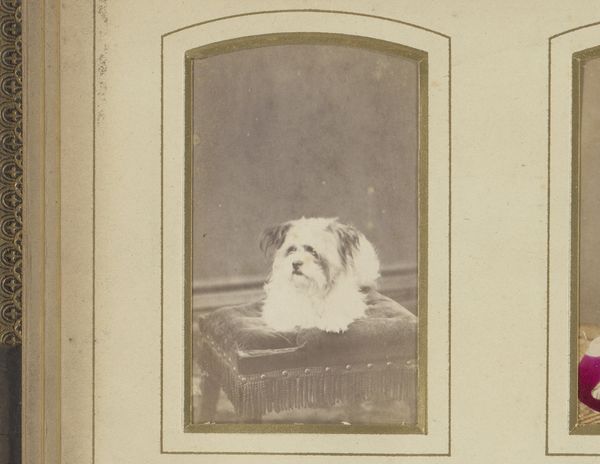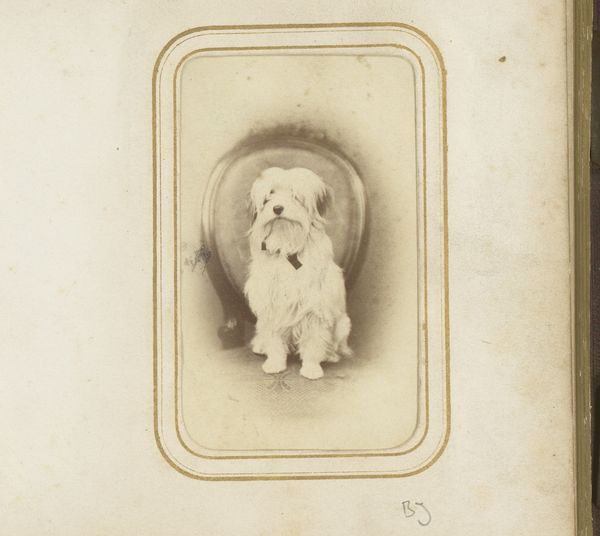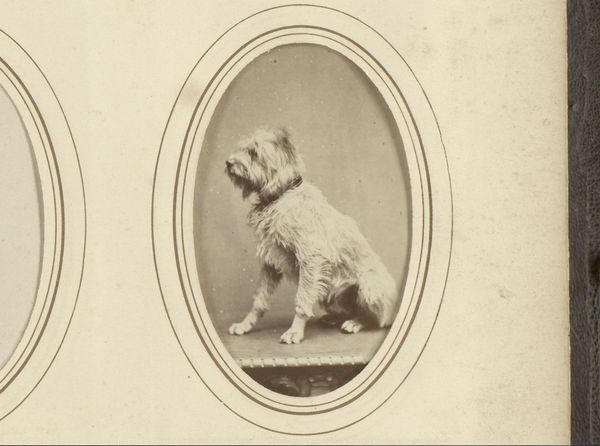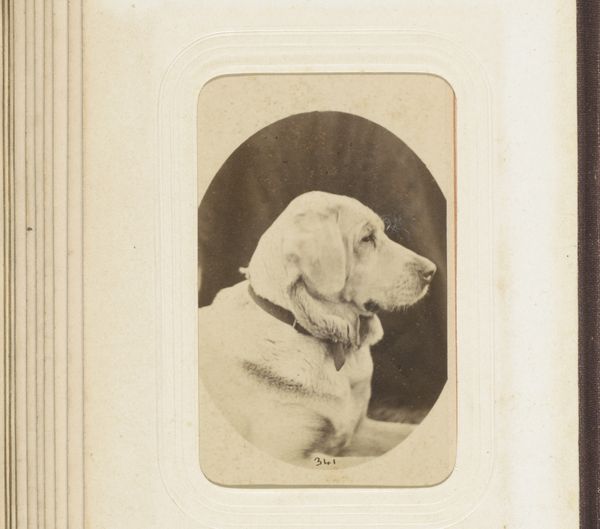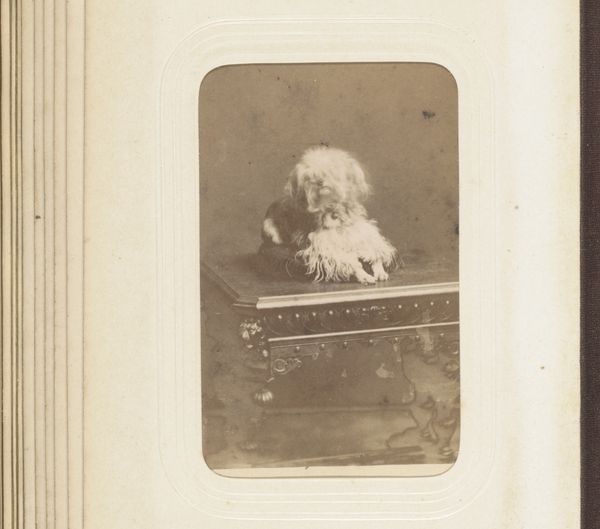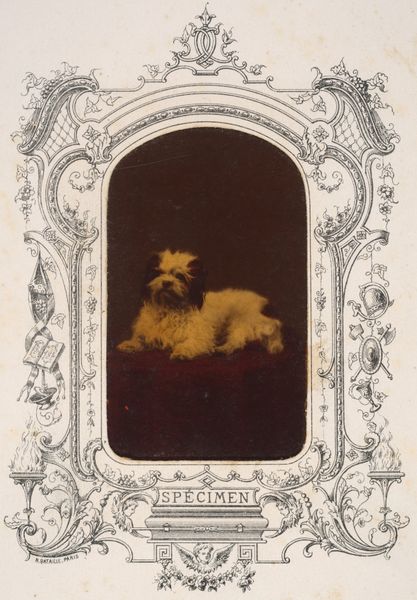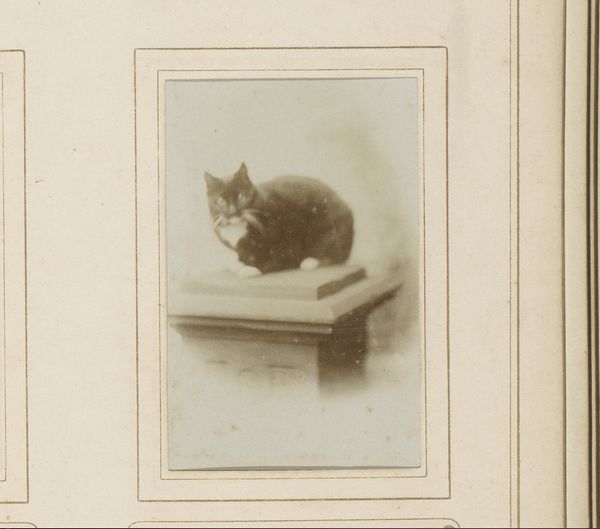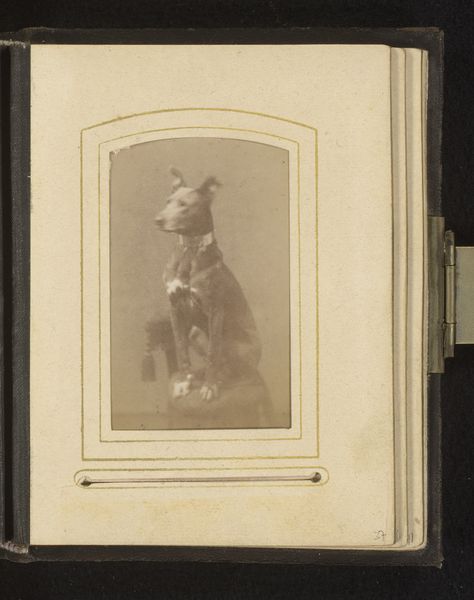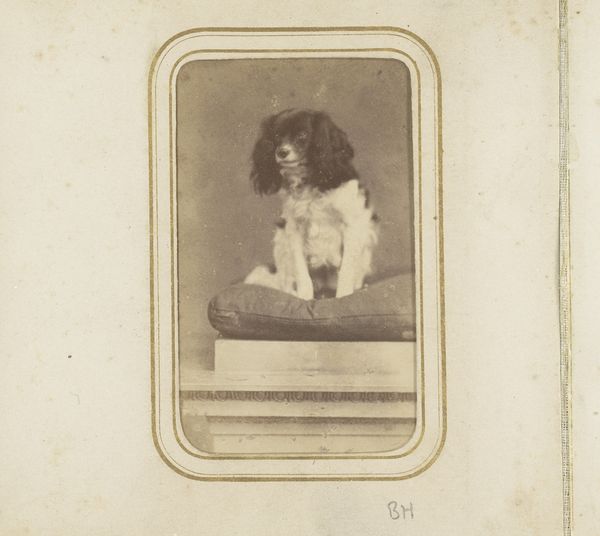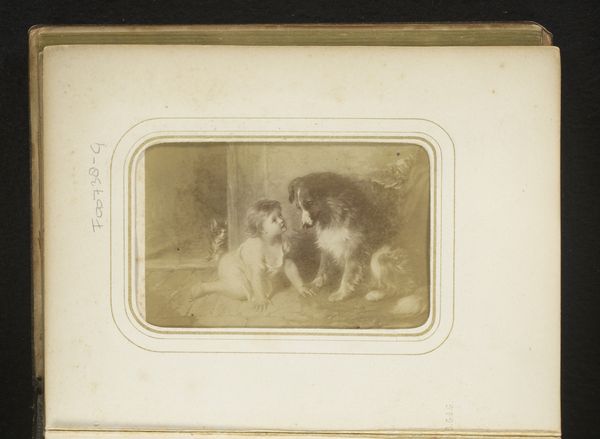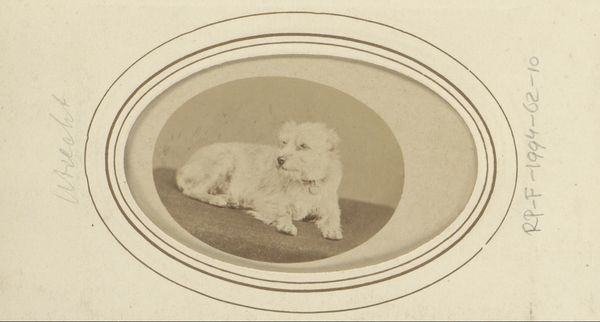
photography
#
portrait
#
still-life-photography
#
photography
Dimensions: height 83 mm, width 51 mm
Copyright: Rijks Museum: Open Domain
Curator: The artwork before us is "Portret van een hond," or "Portrait of a Dog," made sometime between 1850 and 1880 by the Gebroeders Van der Kruk. It is, of course, a photograph. Editor: My first impression is one of muted warmth; the sepia tones lend it a comforting feel. The careful arrangement—the dog centered atop those tiered boxes—gives it a pleasing formal structure, quite classical, really. Curator: The boxes are interesting. They position the dog almost as a symbol of status. We have long imbued dogs with cultural significance, but to place this particular dog so prominently suggests even greater personal meaning to its owner. This photograph speaks to the rise of both the middle class and sentimental culture. Editor: I see your point about the symbolic value. Structurally, the photograph relies heavily on vertical and horizontal lines, establishing a sense of order. Even the dog's fur, fluffy as it is, appears meticulously arranged. And that framing, it feels like a stage. Curator: Exactly. A stage for a beloved member of the family. You know, in Victorian times, dogs became potent symbols of loyalty and domestic tranquility, so there’s an element of idealization at play, would you agree? Editor: Undeniably, but it's fascinating how such idealization relies on formal devices – composition, light, even the texture of the photographic paper itself contributes. These elements elevate a simple pet portrait to a study in sentimental representation. The photographers certainly were skilled in that. Curator: Indeed. Looking at this portrait allows me to consider the long tradition of animals appearing as symbols of fidelity. To trace that tradition into this specific historical moment. It’s quite rewarding. Editor: It really does demonstrate how an artwork—even something as apparently straightforward as a dog portrait—can reveal a wealth of historical and artful insights. I found that surprising, but it's definitely worthwhile.
Comments
No comments
Be the first to comment and join the conversation on the ultimate creative platform.
